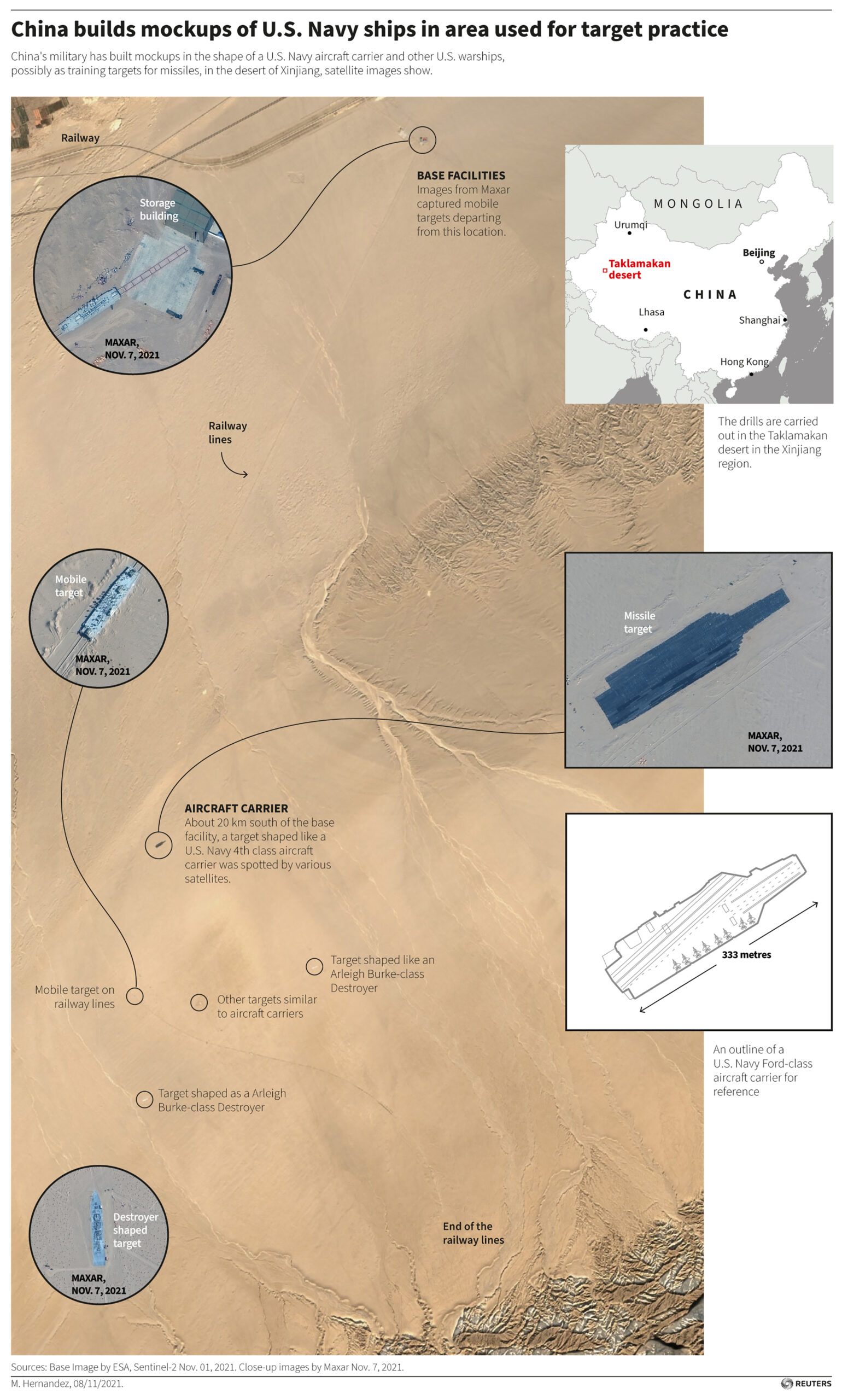THE WATCH STAFF
The People’s Republic of China (PRC) is building targets in the shape of U.S. warships — focusing on aircraft carriers — at two new desert missile sites.
The outlines of the ships were seen in recent photographs provided to the U.S. Naval Institute (USNI) News website by the satellite imagery company Maxar.
At the first suspected site in the Taklamakan Desert in central China, the People’s Liberation Army Navy (PLAN) has built a full-scale outline of a carrier and at least two Arleigh Burke-class destroyers, according to a USNI News analysis by H I Sutton on November 9, 2021. The images also show a 6-meter-wide (about 20 feet) rail system with a ship-size target mounted on it, which experts say could be used to simulate a moving vessel, according to Reuters.
The second site is in the Xinjiang region — miles from the nearest town — and consists of a single carrier target, according to the Maxar satellite photos. The site is about 300 miles away from the larger Taklamakan range. At both sites, the carrier targets are placed as if in a naval convoy. Work on the target at the second site was carried out in October 2021 and appears finished, the satellite photos suggest. Unlike at the first site, the target is not full-scale, according to USNI News, which reported it is about half the size of a U.S. Nimitz-class carrier at 568 feet (173 meters) in length.
The mockups reflect the PRC’s recent efforts to improve its anti-carrier capabilities against the U.S. in the Indo-Pacific region, where tensions have risen over the PRC’s threats to Taiwan and freedom of navigation in the South China Sea.
The Pentagon’s latest annual report on Chinese military power, released November 3, 2021, said that the PLAN is now the largest maritime force in the world. One component of its rapid growth is the development of “carrier killer” anti-ship ballistic missiles (ASBMs), the report said.
China’s anti-ship missile programs are overseen by the People’s Liberation Army Rocket Force (PLARF).
According to Pentagon report, the PLARF conducted its first confirmed live-fire ASBM launch into the South China Sea in July 2020, firing six missiles into the waters north of the Spratly Islands, where the PRC has territorial disputes with Taiwan and other Southeast Asian countries, according to Reuters.
Putting the U.S. warship targets in its remote interior allows the PRC greater airspace control and secrecy for its ASBM tests. Reuters reported that keeping the tests from the sea ensures that any debris cannot be recovered by other navies in the way it could from the ocean floor.
Both factors will make it difficult to gather intelligence on the weapons.
“The best way to test it and keep it out of the prying eyes of the U.S. military and intelligence assets is to do it inland,” Collin Koh, a research fellow at the S. Rajaratnam School of International Studies in Singapore, told Reuters.
IMAGE CREDITS: REUTERS


